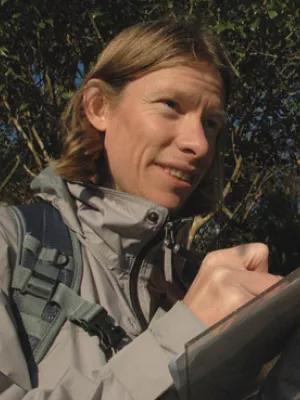
Per-Ola Olsson
Researcher

Monitoring insect defoliation in forests with time-series of satellite based remote sensing data - near real-time methods and impact on the carbon balance
Author
Summary, in English
The results demonstrated that time-series of satellite data could be applied to find what year an outbreak by the invasive Hungarian spruce scale in southern Sweden started, and showed the potential of developing an early warning system. An early warning system would most likely have detected the outbreak the year before it was detected in field; for invasive species early detection is important to enable rapid counter-measures to decrease the risk that new species establish populations.
The results also showed that coarse spatial resolution satellite data (MODIS 250x250 m pixels size) can be used for near real-time monitoring of insect induced defoliation with the aid of Kalman filtering and cumulative sums (CUSUM). Of the defoliated MODIS pixels in mountain birch forests in northern Sweden 74–100% were detected with a misclassification of undisturbed pixels of 39–56%, depending on threshold settings. In addition, the developed method facilitates studies of the intra-seasonal dynamics of an insect outbreak as well as mapping of potential refoliation; these are major advantages compared to methods that classify a pixel into defoliated or undisturbed for an entire season. The coarse spatial resolution of MODIS is, however, a limitation in fragmented forests. A method based on z-scores of seasonal maximum values of a vegetation index showed that detection accuracies were low in fragmented and heavily managed pine forests in eastern Finland compared to the more homogenous mountain birch forests in northern Sweden.
The thesis also demonstrated that satellite data and meteorological data can be used to map the impact of insect outbreaks on gross primary productivity (GPP) with the aid of a light use efficiency (LUE) model. The LUE model was calibrated with eddy covariance measurements, and the near real-time monitoring method was applied to monitor defoliation. An extensive set-back to the carbon uptake in deciduous semi-arctic forests due to insect defoliation was recorded. These results demonstrated the potential to develop methods to both monitor insect disturbances and to quantify the impact of these disturbances on primary productivity. Such methods would be important to decrease the uncertainties in estimates of insect outbreaks impact on the carbon balance.
Department/s
- Dept of Physical Geography and Ecosystem Science
- BECC: Biodiversity and Ecosystem services in a Changing Climate
Publishing year
2016
Language
English
Full text
Document type
Dissertation
Publisher
Department of Physical Geography and Ecosystem Science, Lund University
Topic
- Physical Geography
Status
Published
Supervisor
- Lars Eklundh
ISBN/ISSN/Other
- ISBN: 978-91-85793-55-6
Defence date
14 April 2016
Defence time
10:00
Defence place
Pangea, Geocentrum II, Sölvegatan 12, Lund
Opponent
- Mike Wulder (Senior Research Scientist, PhD)

